Le Causse de la Courounelle lies above the little hameau de Mayranne (or sometimes Mayrannes . . .) before it merges into the upper expanses of le Causse de Mayranne. This particular hillside is perhaps the most extreme example of karstic pavement I’ve seen. It’s a wild maze of white-grey limestone: long streams of rock like poured concrete; beaches and dunes of pale rubble, cracks and crevices and deep diaclases that spark in their darkness if a stone is dropped into their depths.
There is, unusually, a man-marked way through the maze: hunters have piled small mounds that one follows heap to heap, snaking around impenetrable islots of ilex and box. But this dolmen is well off-track, and there are no landmarks to help: a GPS is indispensable. As are steady nerves, for wild boar are present; I have yet to see one, but their fresh rootlings are everywhere and they can be heard moving off if one gets too close.
This is a more complex dolmen than the ‘dolmen simple‘ of Coupiat. Jacques Lauriol, the only archaeologist to have published anything on these tombs [Deux Mégalithes du Causse de Minerve. Cahiers Ligures 1961], called it an ‘allée couverte‘. Since then Jean Guilaine and Paul Ambert have refined the definitions of the very varied types of dolmen in the département de l’Aude. The grand megalithic tombs of the plain are now known as ‘allées de l’Aude‘ or ‘allées au couloir large‘. This tomb is now considered to be a ‘dolmen à antichambre‘.
The two main orthostats are impressive in both size and regularity of shape. Lauriol gives 1.2 m. x 1.80m. for pilier A – the more vertical northerly stone; and 1.2m. x 2.1m. for pilier B, the leaning southerly stone. The thickness of both is also quite regular: 15-20 cm.
Lauriol found the following human remains in the main chamber or cella:
large fragments of long bones; the head of a femur; some ribs; sections of skulls; 8 finger bones; 55 teeth, some of which were children’s.
Ceramic finds: good quality pottery of a red-beige colour, one shard of which bore finger & nail imprint designs. These campaniform pieces were enough to date the tomb as Neolithic/chalcolithic.
Above is a closer view of the foot, showing the low stone wall (F in the drawing) that forms part of the antichamber (between E and F). In this area Lauriol found smaller fragments of leg/arm bones, one fragment of a jaw, three finger bones and 12 worn teeth.
Ceramic finds: twenty pottery shards of identical composition and style to the main cella, and part of a round vase of blackish clay, which was the only evidence that the tomb had been re-used in the Bronze age.
The space between these two ‘foot’ orthostats was sterile.
Above is a view from the south: the table or capstone looks like it would fit neatly back on top. It measures 2m. L x 1.1m. W.
There are two other large slabs that could have been capstones or orthostats.
The southern (lefthand) orthostat is being pushed inwards by the weight of the much thicker table. Lauriol notes that little soil remained within the main cella: previous excavations (probably by Jean Miquel, in 1930) left the structure considerably weakened.
Above is a view from the foot. Lauriol does not remark on the orientation (though the sketch does have a compass north) – it is 230° or due south-west.
Once again here is a dolmen that deserves better: the table is intact and could be winched back in place; there is a marked way to within 500 metres – and the setting is impresionnante. That moulded-concrete behind is in fact the far side of a deep ravine, foreshortened by the lens.
The Charter for the future sustainable development of the Parc Naturel Régional du Haut-Languedoc specifically mentions Minerve and Mayranne, and urges the sensitive restoration of prehistoric sites and their promotion: ‘Un patrimoine mégalithique exceptionnel à valoriser davantage.’

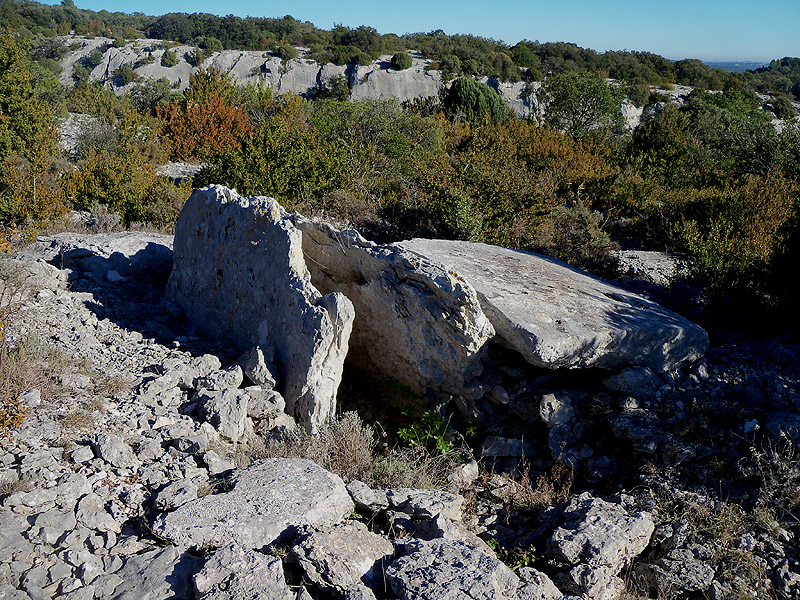
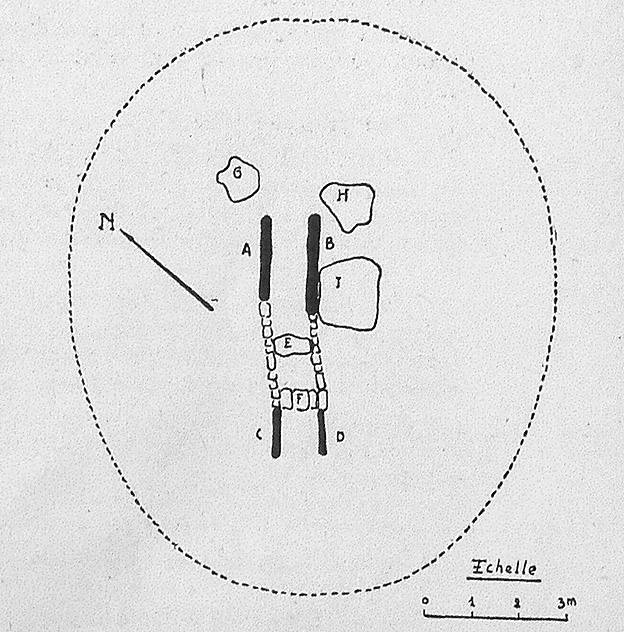
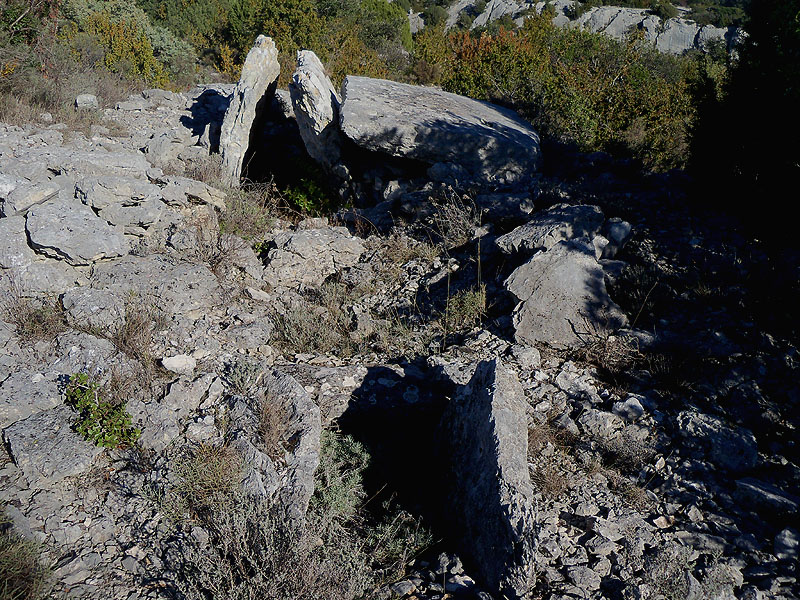
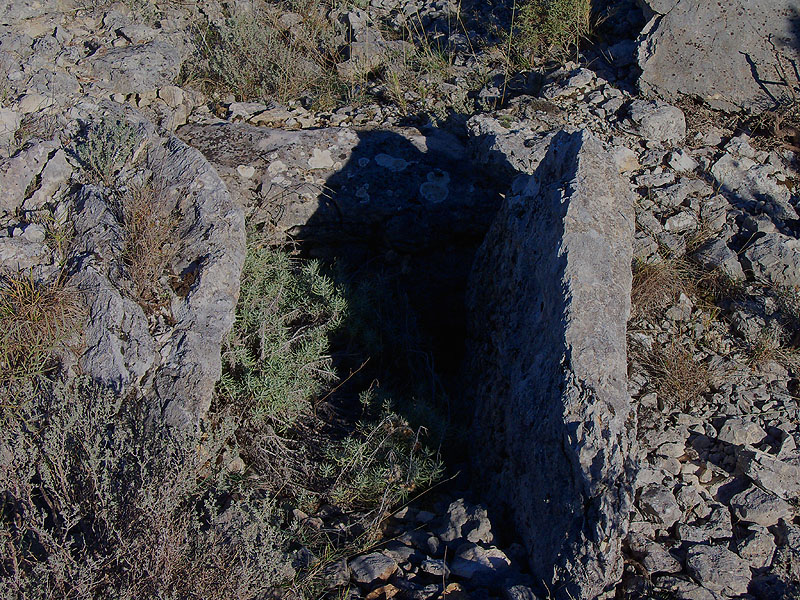
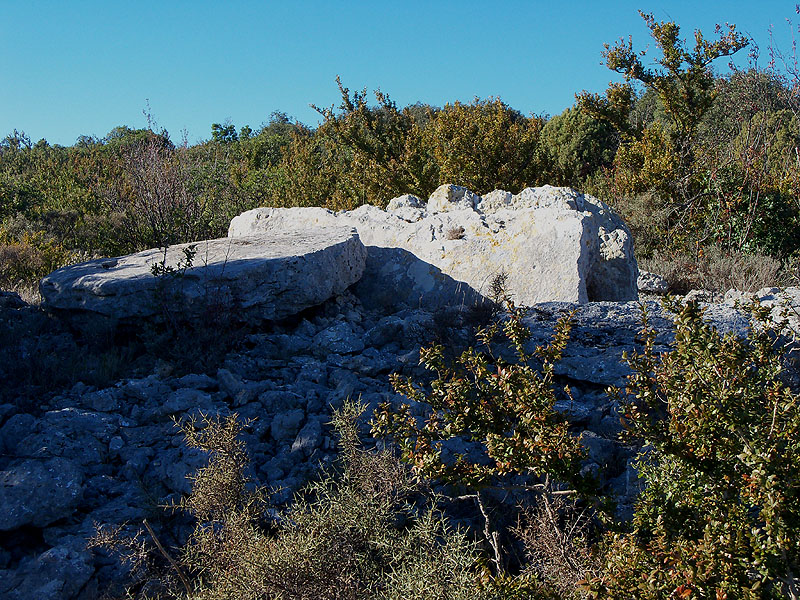
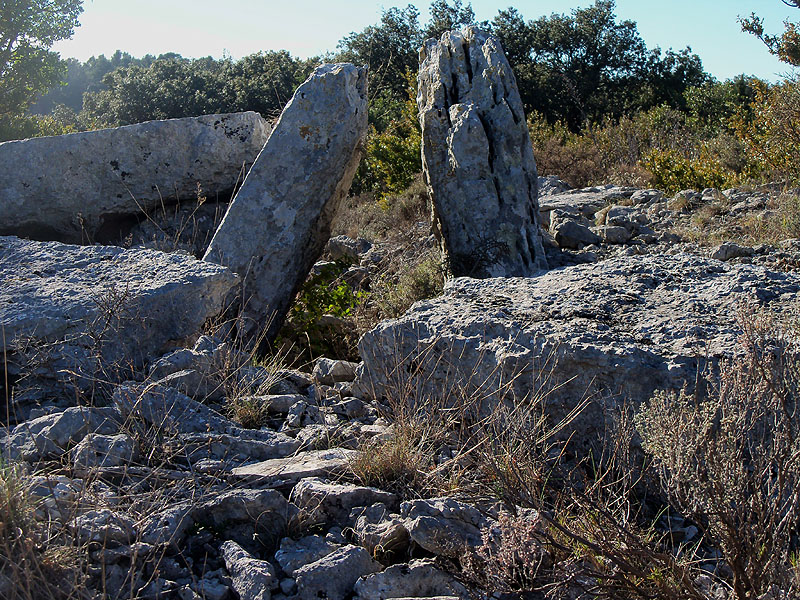
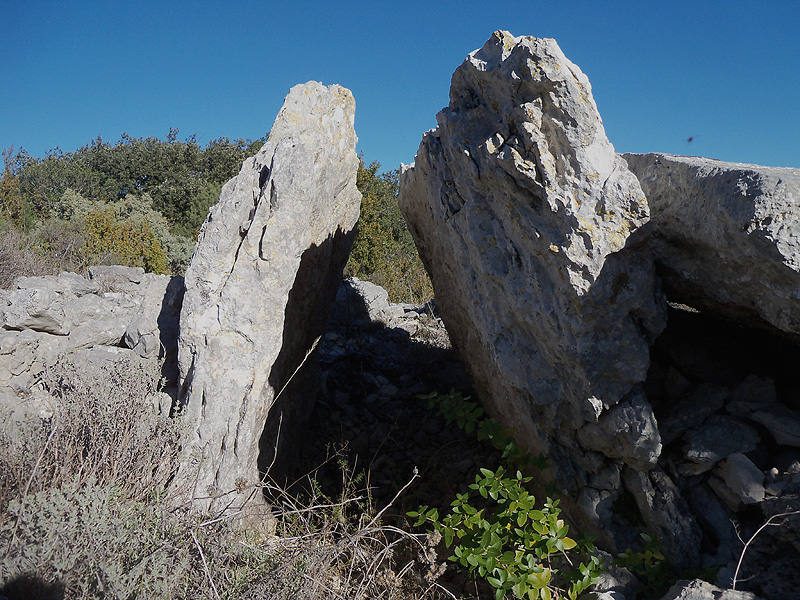
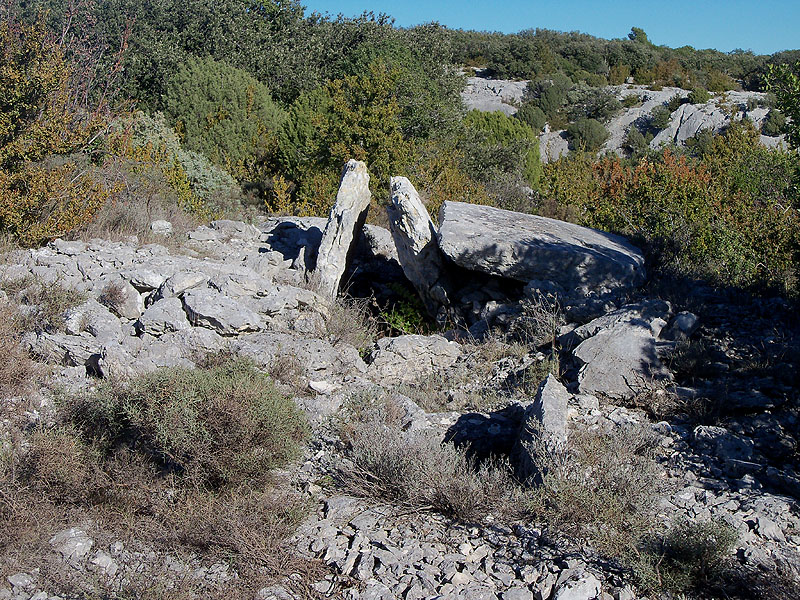

Leave a comment